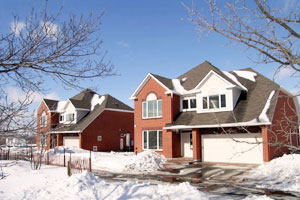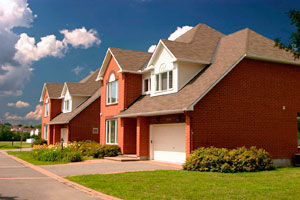
The CCHT twin house facility in Ottawa, Canada
Two weeks ago in this blog I tried to answer the question, Do compact fluorescent lights (CFLs) save energy overall? Even though CFLs contribute a lot less heat to a house in the winter, compared to incandescents, CFLs still save energy overall, even in places like Anchorage, Alaska. Thanks to the folks at the Canada Centre for Housing Technology (CCHT) who did the research to answer that question.
The Department of Energy, the Environmental Protection Agency, and others recommend that we set our thermostats at 68°F in the winter and 78°F in the summer. Some people are comfortable at home with these temperatures and some or not. So how can we save energy and still be comfortable?
Besides recommending that people replace their incandescent bulbs with CFLs, we at Home Energy also encourage people to turn their thermostats down when they are away from home during the winter, and to set them up when they are away from home in the summer. Both actions are supposed to save energy. But do they? It's not really that clear. For example, if you set your thermostat at 60°F before you leave for work in the morning, and then set it at 68°F in the afternoon when you get back, does your furnace use more energy raising the temperature of your house from 60°F to 68°F, than it saves by having the temperature at 60°F all day?
Once again the Canadians have come up with an answer. Marianne Armstrong and her colleagues at CCHT used the twin house research facility to show that thermostat set backs in the winter and thermostat set forwards in the summer really do save energy.
